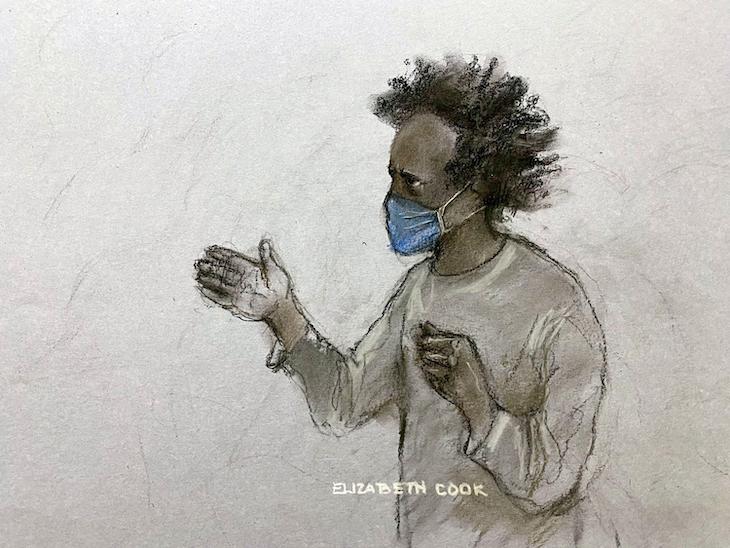Our state counterterrorism strategy ‘Prevent’ is overwhelmed. This is the strand of our national plan, ‘Contest’, to defeat extremism. Prevent is charged with spotting and stopping tomorrow’s terrorists, but the official data on its operation over the last reporting year, released yesterday, paints a picture of mission creep and distraction and an organisation and that can’t do this job. Far from identifying people who want to kill for ideas, Prevent has become a repository for vulnerable and often dangerous young people who have been failed by every other state agency. Its net is cast so wide that very bad people have fallen through it and into atrocious crimes. There have been at least six instances of people who have had contact with Prevent going on to commit terror attacks. What’s going wrong?
The latest data gives a clue. Total referrals to Prevent reached 8,778 in the year ending March 2025, a 27 per cent increase from 6,922 the previous year and the highest number since records began in 2015. Concerns about extreme right wing (ERW) ideology dominated referrals to the taskforce with a 37 per cent year-on-year increase, while Islamist extremism (IE) referrals dropped by 5 per cent. And yet both counterterrorism police and the security service have said repeatedly that the bulk of their business lies in stopping Islamist-inspired terrorism. The Contest strategy’s latest analysis says 67 per cent of attacks occurring since 2018 count as IE. The security service annual assessment states that three quarters of their caseload is Islamist terror plots. What explains this contradiction between prevention and perpetration?
Prevent is a demand-led strategy. This means that it relies on referrals made by other public bodies which are signed up to the ‘Prevent Duty’, requiring them to pay due regard to stopping people being drawn into terrorism. The murder of three children by Axel Rudakubana in July 2024 came almost halfway through the latest reporting period. It’s clear from the official data this had a significant impact on referrals by age. A surge in reporting happened soon after the Rudakubana murders and 36 per cent of all referrals were aged 11-15. The Prime Minister’s comments that the riots that followed Rudakubana’s atrocity were ‘far-right thuggery’ may also have impacted on professionals – particularly teachers – worried about the radicalisation of young people and caused a moral panic about neo-Nazi ideology which, while certainly present, has much less potency and traction in Britain than theocratic fascism. While Rudakubana was oddly not convicted of an act of terrorism, his fascination with Isis terror porn, knives and extreme violence led him to be referred to Prevent three times before he killed. The paucity of that intervention is now being painfully revealed to the bereaved and survivors of the Southport attack in the ongoing public inquiry.
The reason for Rudakubana’s referral is borne out in the Prevent statistics. Some 56 per cent of the organisation’s business is concerned with screening people who have no clear ideology at all, suggesting many cases involve vague vulnerabilities rather than overt extremism. Arguably this could inflate ERW’s relative figures if minor online behaviours (e.g., sharing memes) are flagged as right-wing by worried teachers; IE, meanwhile, requires clearer ideological markers. It is possible this skew may be influenced by current debate over the existence and extent of Islamophobia. These allegations seek to explain the dramatic over representation of Muslims in the programme compared to their community representation. But 61 per cent of our terrorist prisoners are Islamist by ideology compared with 6.5 per cent community representation. So these accusations don’t stack up. Something else is at work here which shows prevention activity as so disconnected from the impact of violent extremism – when hateful thought turns into murderous action.
Prevent is turning into a giant safeguarding creche
Whatever is happening, it’s clear to me that Prevent should not be in the business of offsetting the failures of other institutions. Some 80 per cent of referrals to Prevent do not get progressed to its intervention strategy, ‘Channel.’ Many of these referrals will be from disaffected young people who have been starved of the right help as they developed unhealthy but otherwise harmless fixations. The Child and Adolescent Mental Health Services (CAMHS) has been in permanent crisis since the day it was launched in 1987. Starved of funds and short of staff, many of the young people who end up being screened by Prevent should have had psychological help, long before a counterterrorism response. Prevent is turning into a giant safeguarding creche, permanently distracted from its core aim by an ever-growing cohort of nihilistic and psychologically or developmentally impaired youngsters. This has to be stopped.
Even with ‘Channel’ interventions for those deemed genuinely of concern, help is only delivered with the consent of the individual. If this help is refused, there is no single agency that takes on the burden of managing that risk, particularly if it is not deemed ideologically motivated. This is how people fixated by mass murder for its own sake hide in the shadows. Prevent’s use needs to be rationed, but we also need a new way of controlling people who kill for fun, not faith or politics.








Comments